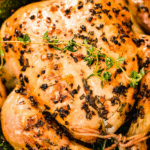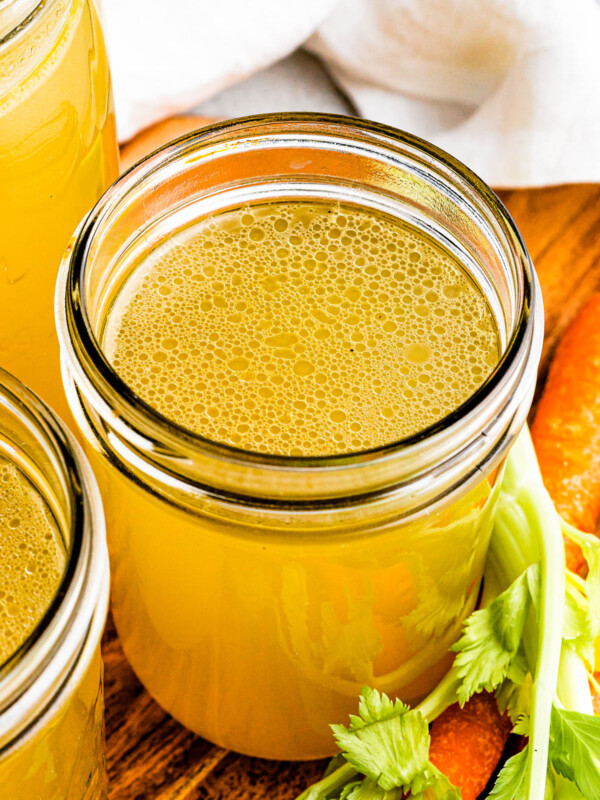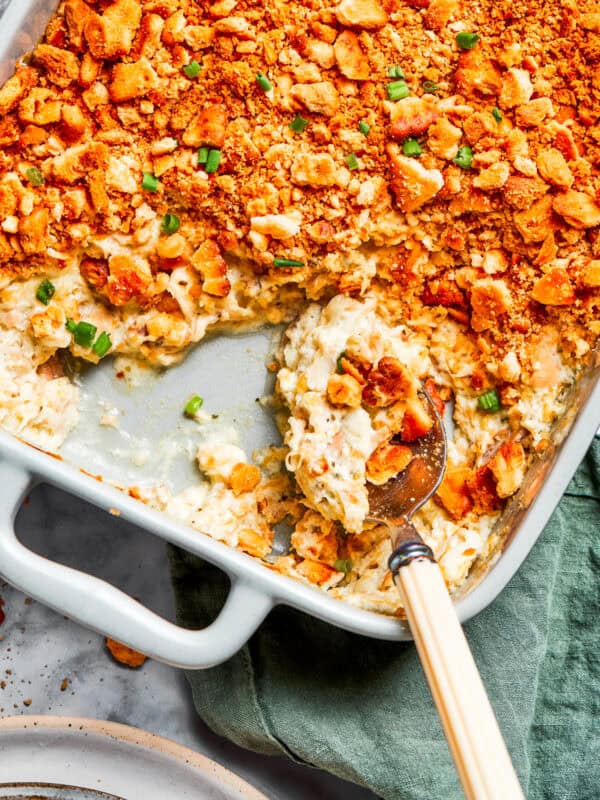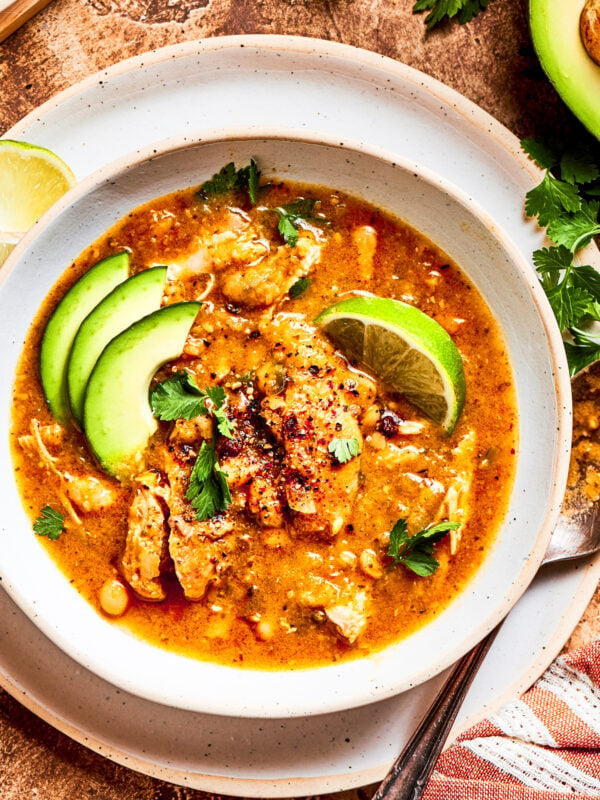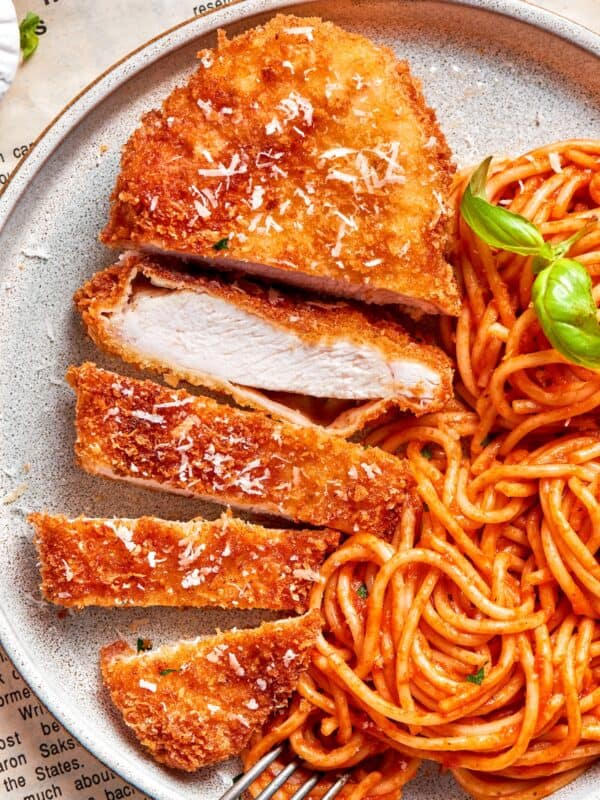Juicy Whole Roast Chicken with Fall Vegetables
Nov 25, 2020, Updated Jul 31, 2023
This post may contain affiliate links. Please read our disclosure policy.
This Juicy Whole Roast Chicken with Fall Vegetables is a nourishing and beautiful dinner. Rubbed with olive oil, seasoned with rosemary and thyme, and surrounded with colorful vegetables, it’s old-fashioned comfort food at its finest.
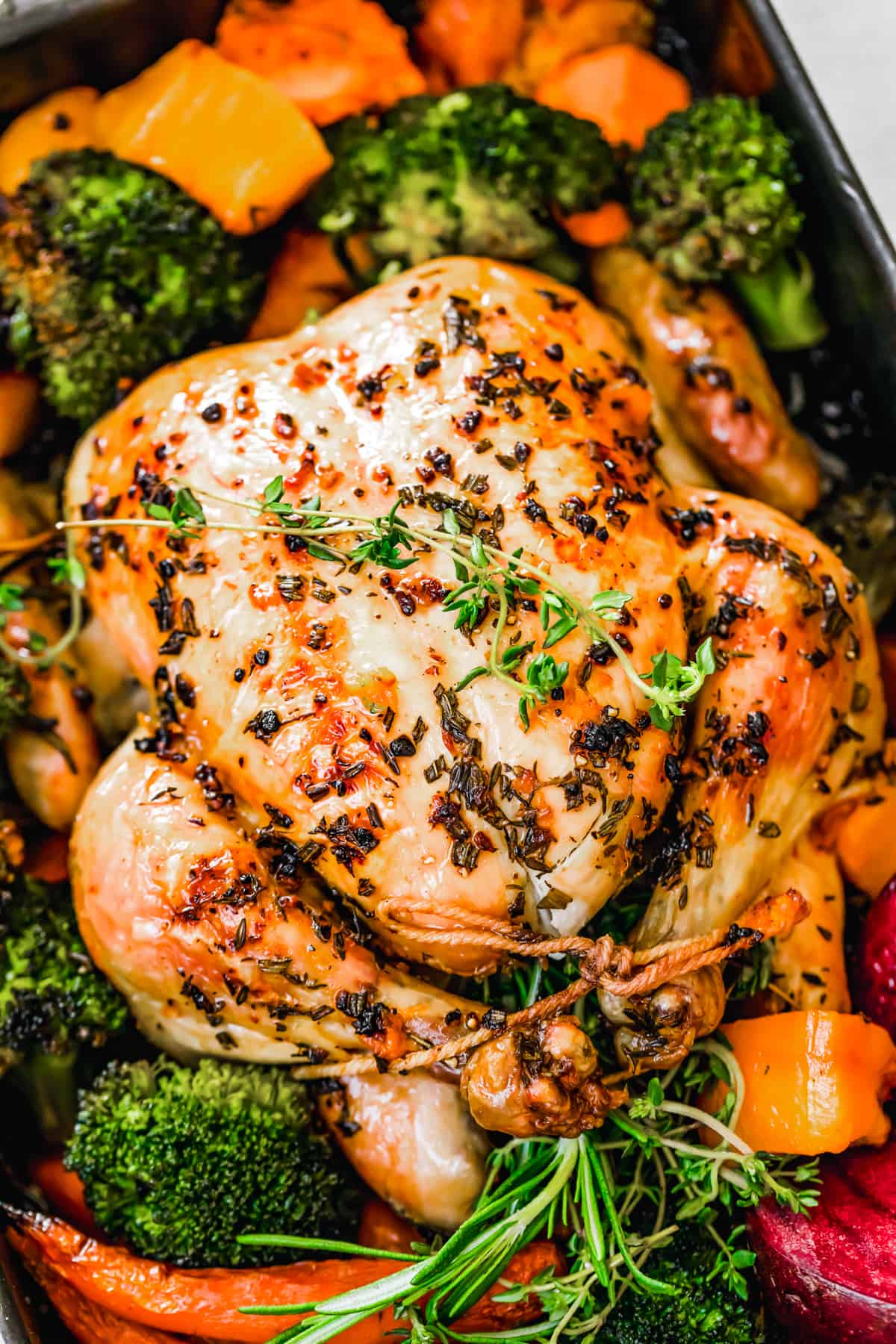
My Favorite Way to Roast a Whole Chicken
Sometimes cooking is almost a meditative thing, you know? And there’s definitely something soothing and calming about roasting a whole chicken—so classic and so good! I really love using this simple and flavorful recipe to make a time-honored and satisfying roast chicken, because it’s easy and super-delicious.
Why I Love this Recipe
This recipe only uses a few ingredients and a very basic cooking method, but the result is ah-mazing! All of the flavors complement each other perfectly, creating a beautiful medley of autumn-and-winter colors, textures, and tastes. And the oh-so-simple roasting technique delivers a juicy chicken, every time!
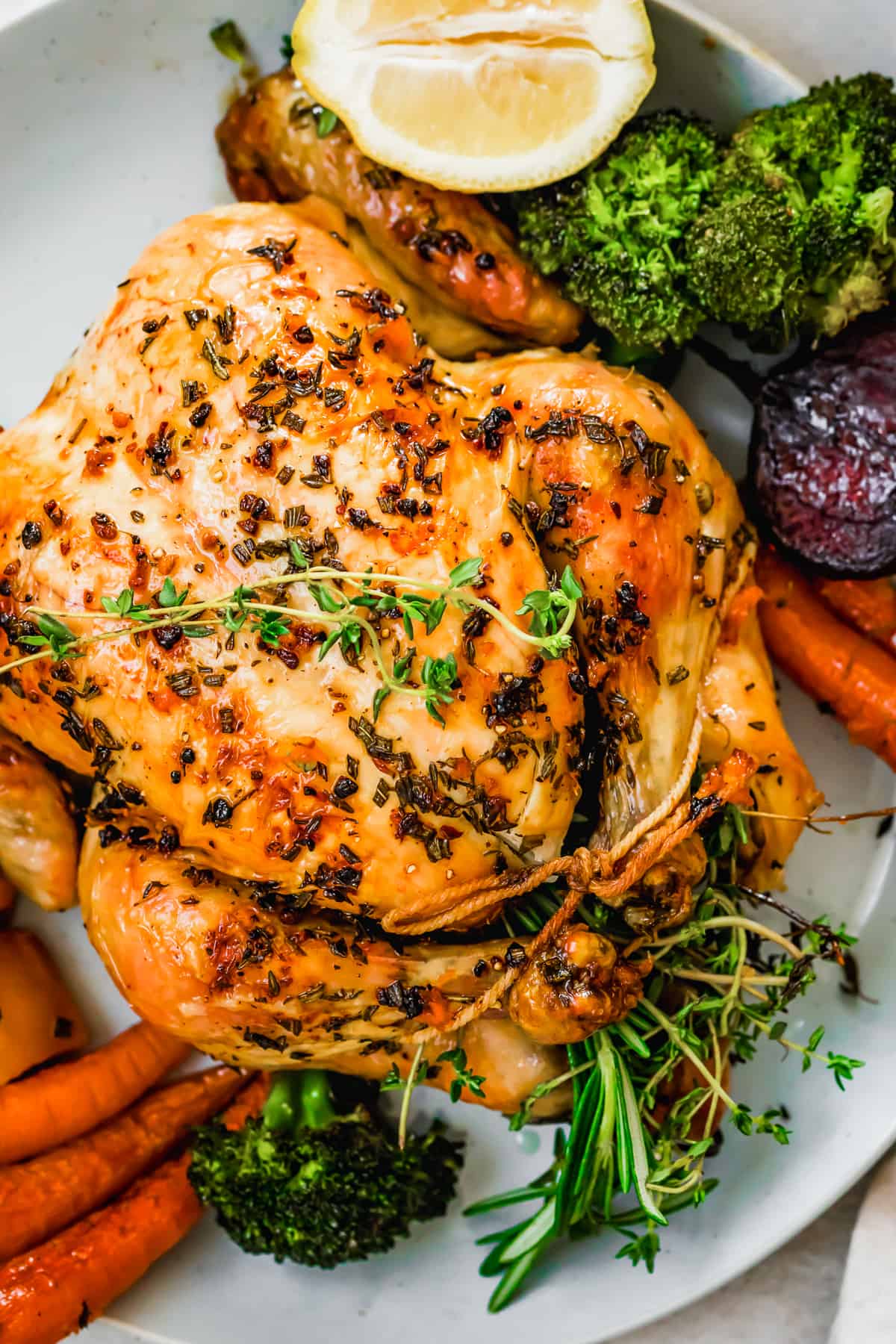
Ingredients
For the Chicken:
- One Whole Chicken: I usually purchase a chicken weighing between 3 and 3 ½ pounds. Feel free to use a larger chicken, but keep in mind that the cook times will vary!
- Lemon: I use one half of a lemon, cut into quarters.
- Thyme and Rosemary: You’ll need two sprigs of each, as well as ½ a teaspoon, chopped, of each.
- Fresh Garlic: This recipe uses two whole cloves of fresh garlic, as well as one clove, minced.
- Olive Oil: You’ll need about 3 tablespoons of good olive oil; extra-virgin is fine, but virgin or even light olive oil is also good!
- Salt and Pepper
For the Vegetables:
- Veggies: I use half a pound each of baby beets, butternut squash, sweet potato, baby carrots, and broccoli florets. The beets should be cut in half, while the squash and sweet potatoes should be peeled and cubed.
- Onion: Peel and quarter one onion.
- Olive Oil: Use about 3 tablespoons of good olive oil to dress the veggies.
- Lemon Juice: The other half of the lemon can be juiced for dressing the veggies.
- Salt and Pepper
- Rosemary: 3 sprigs of fresh rosemary add subtle flavor to the vegetables.
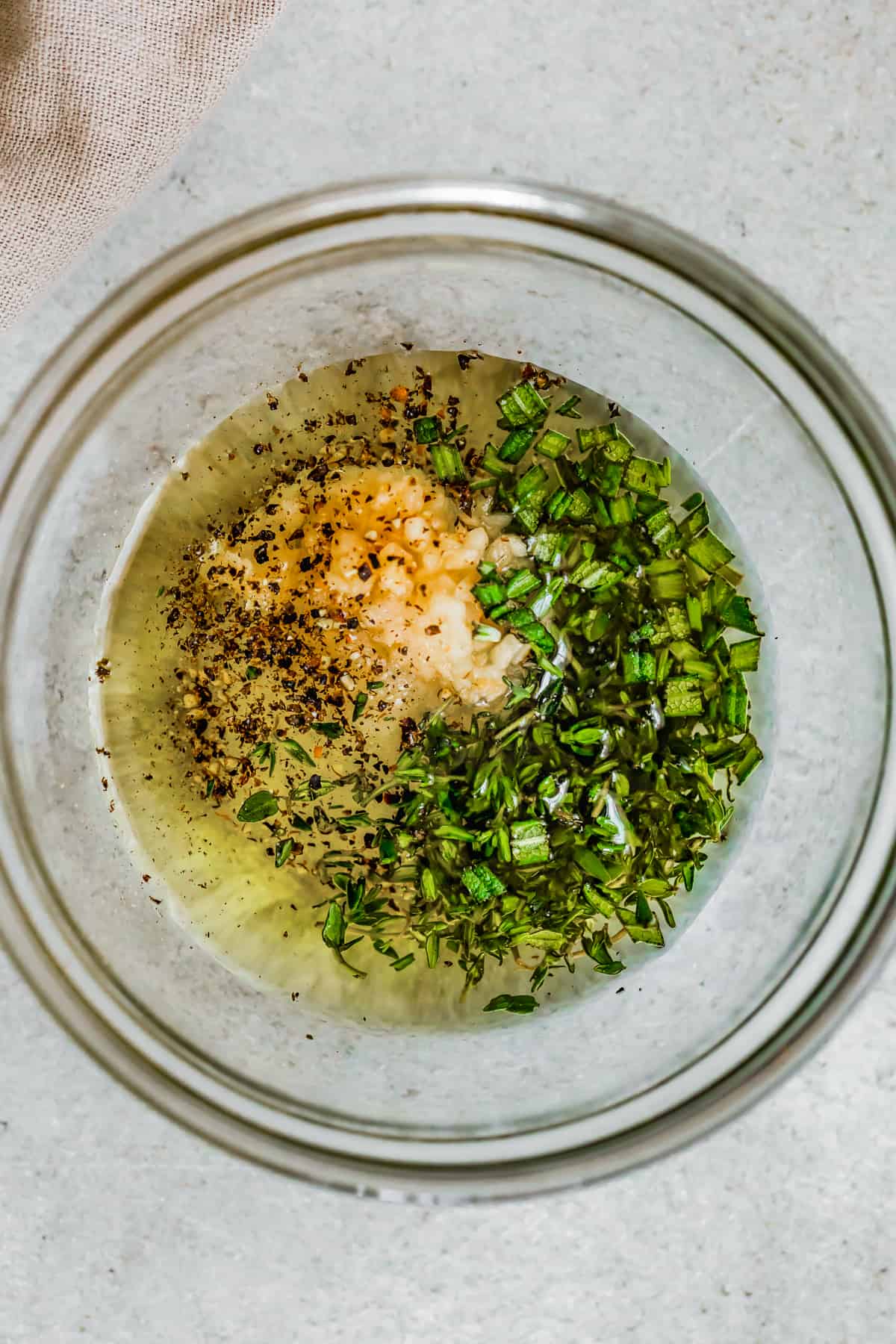
How to Roast a Whole Chicken
- Prep the Chicken. Pat dry the chicken with paper towels. Place the lemon quarters, thyme sprigs, rosemary sprigs, and garlic cloves in the chicken cavity. Then, tie the legs together with kitchen twine, and tuck the wings under the chicken.
- Rub the Chicken with Olive Oil Mixture. In a small bowl, combine the olive oil, thyme, rosemary, minced garlic, salt, and pepper. Rub the oil mixture all over the chicken skin to coat. Place the prepared chicken in a large roasting pan.
- Dress the Veggies and Place Around the Chicken. In a large mixing bowl, place all the prepared vegetables except the broccoli florets. Add the olive oil, lemon juice, salt, and pepper, and mix until well combined. Arrange the vegetables in the roasting pan around the prepared chicken. Top with the sprigs of rosemary.
- Roast. Place the roasting pan in the oven, preheated to 450°F, and roast for 12 minutes. Then turn the heat down to 350°F and continue roasting for about 45 more minutes. Remove the pan from the oven, add the broccoli florets, and roast for a further 20 minutes or so, or until chicken is golden and cooked through and vegetables are tender.
- Enjoy!
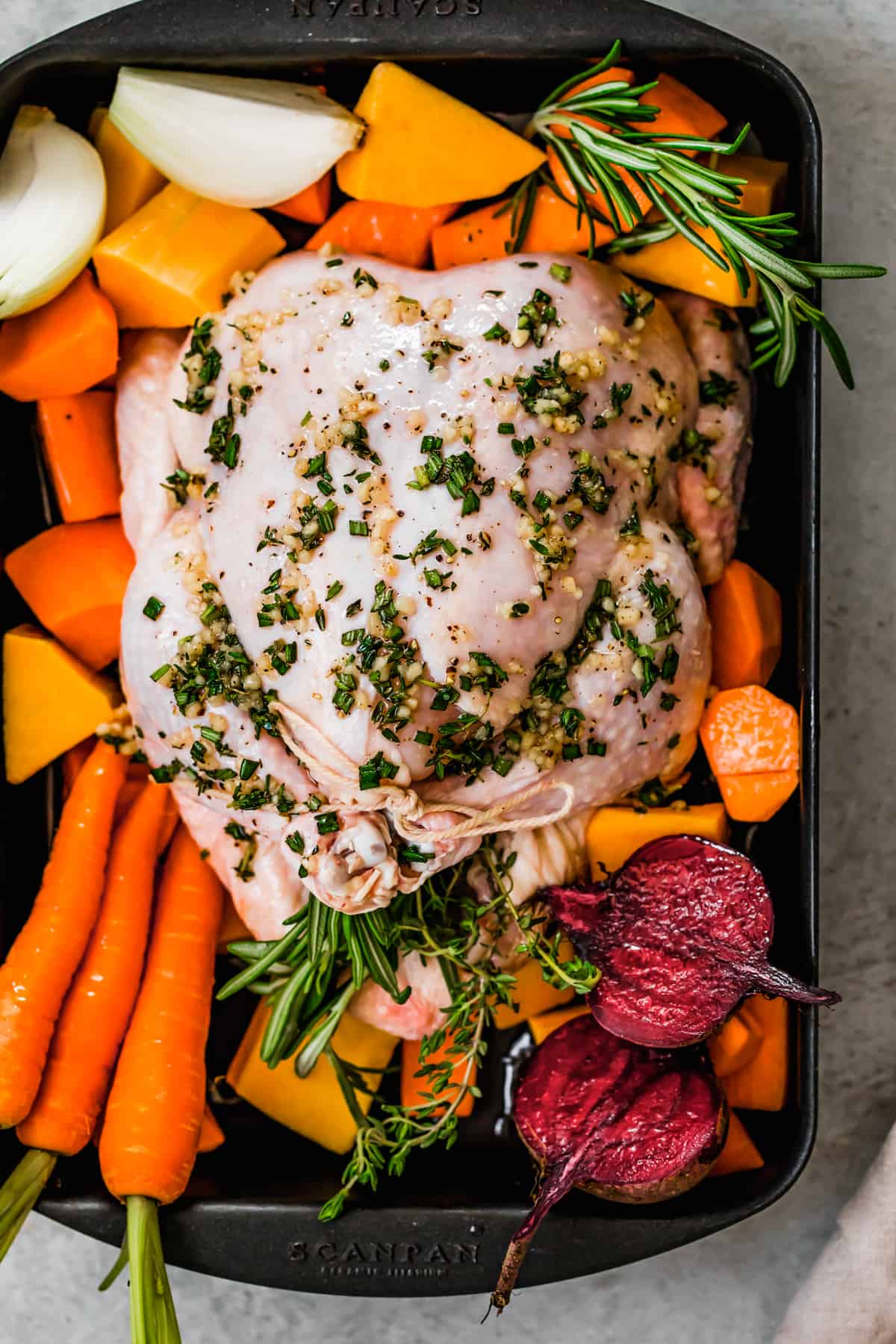
How Long to Roast a Chicken
Start out with 12 minutes at 450°F, and then turn down the heat and roast at 350°F for 20 minutes for each pound of chicken. This easy method can help your adjust your roasting time for any sized chicken.
Keep in mind, it’s still important to test for doneness using a meat thermometer! Because ovens vary, you’ll want to make sure that the internal temperature of the chicken is 165°F. To test the temperature, insert the thermometer into the thickest part of the chicken thigh, not touching the bone.
Tips for the Best Whole Roast Chicken
Want to know more about making your best roasted chicken? These easy tips will help you to understand the method and use it correctly!
How to Brown the Chicken
You might have noticed that we start with a quick roast at 450°F, before turning down the heat for the rest of the cook time. The reason for that is that the higher heat helps to brown the chicken and seal in its juices. It’s kind of the same concept as searing your roast before, well, roasting it!
Cook Uncovered for Crispy Skin
So definitely one of the yummiest things about roasted chicken is the delicious crispy skin! But, what if your chicken is browning too quickly? If you need to, you can “tent” the chicken with foil for part of the cooking time, so that it doesn’t scorch or dry out on top. But make sure to tent it loosely, not tightly, and to leave the chicken uncovered during the first roast at 450°F, as well as the final 20 minutes or so, to maintain that crispiness!
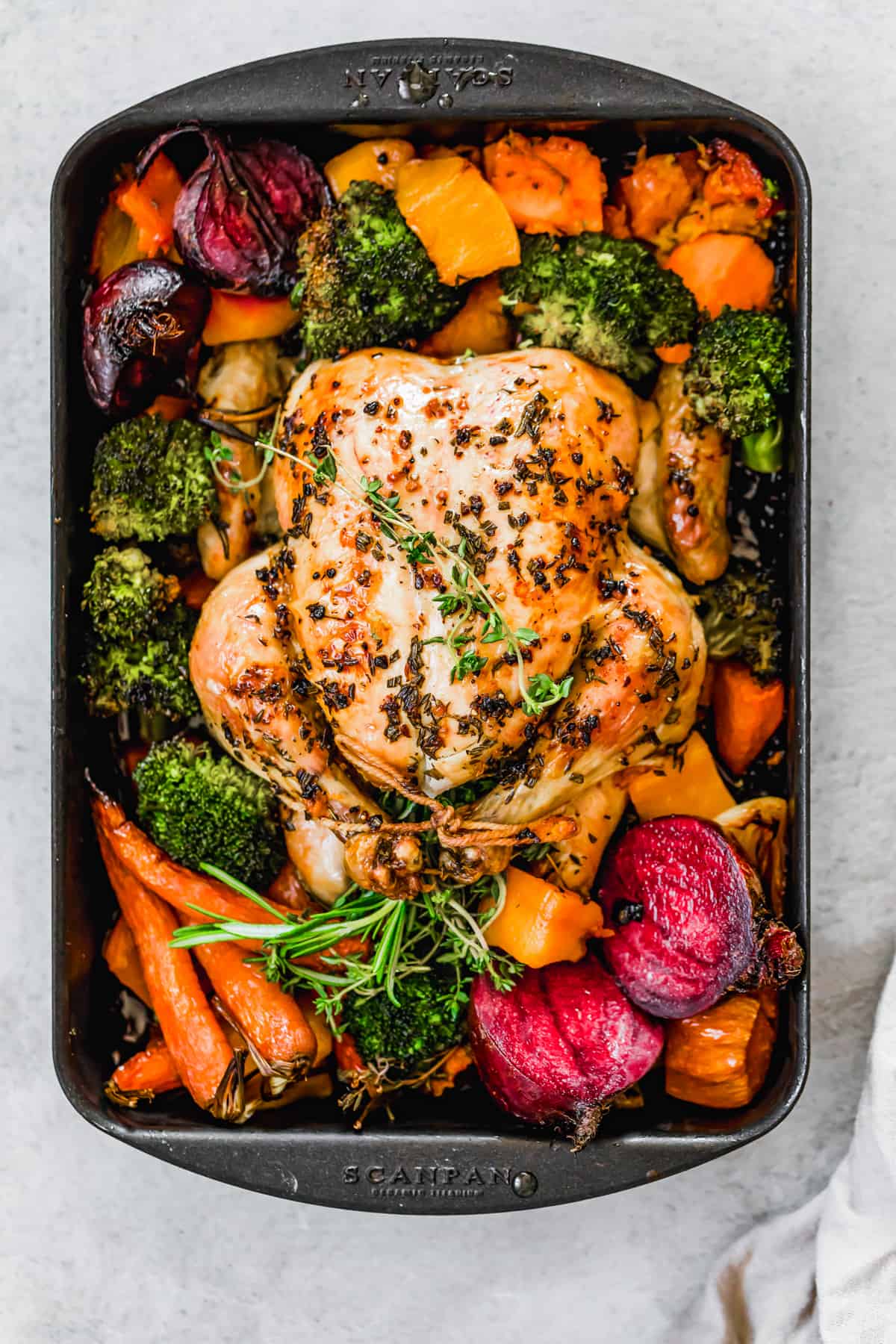
Serving Suggestions
- Apple Cider: Whether it’s seasonal, non-alcoholic cider, fizzy hard cider, or Slow Cooker Apple Cider Punch, apple cider is just a beautiful match with this dinner!
- Homemade Bread: An easy and savory quick loaf, like my Spinach and Feta No-Yeast Bread, makes a lovely addition to the meal, and can even be sliced and toasted to make some killer garlic bread!
- Apple Pie: Again, you can’t go wrong with apples and chicken! I love a hearty square of Dutch Apple Slab Pie to end this comforting menu. Yum!
How to Store and Reheat Leftovers
- To refrigerate: Remove leftover chicken from the bones, and store in the refrigerator along with veggies and pan juices in airtight containers. Leftovers will keep in the fridge for up to 2 days.
- To reheat: Place leftovers in an ovenproof dish, and bake at 350°F until heated through. Make sure to place any chicken pieces skin-side-up. Do not Overcook, or the chicken will dry out.
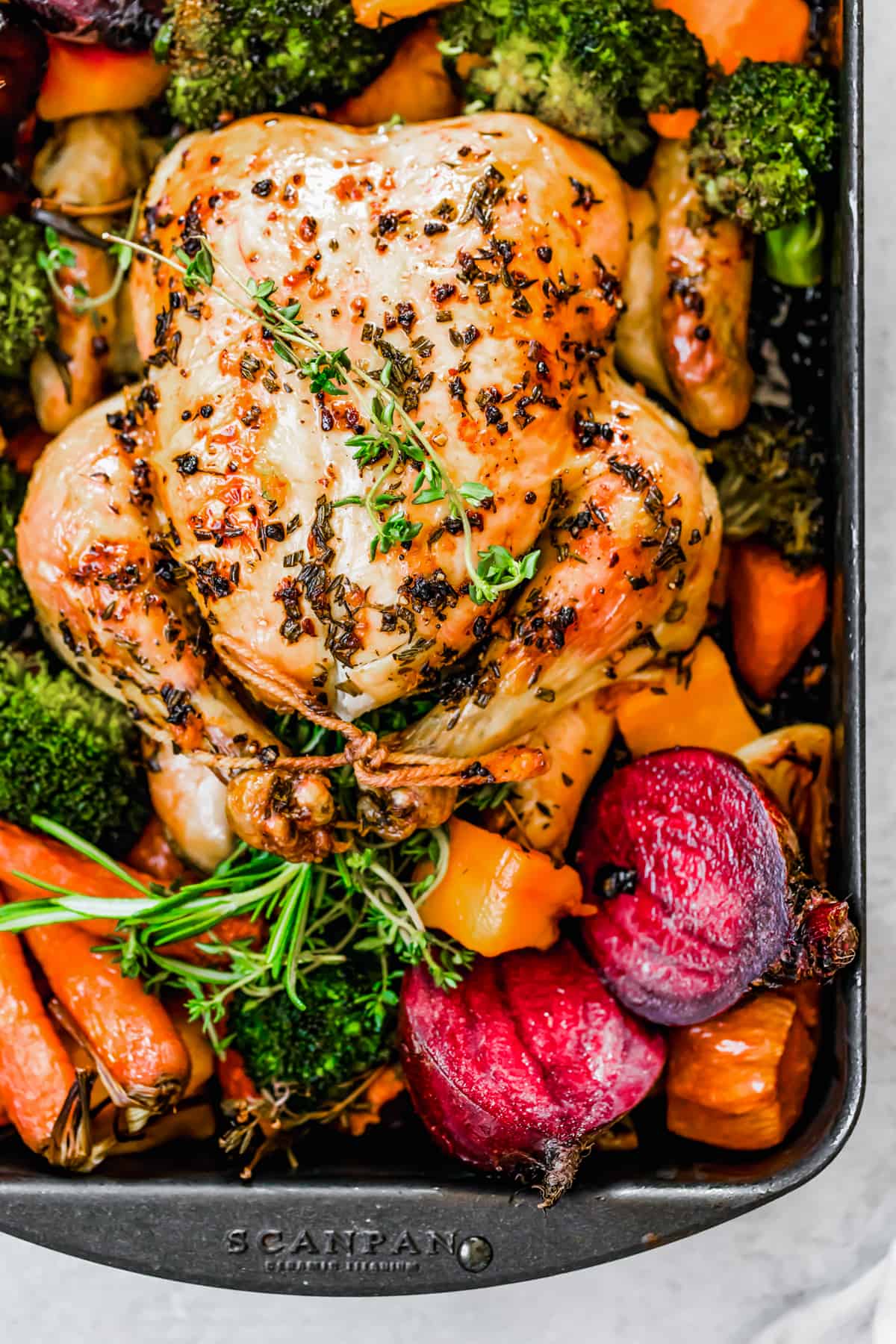
Can I Freeze Extra Roast Chicken?
- Yes! To freeze, place deboned chicken with pan juices in freezer bags, pushing out nearly all of the air before sealing (if there are a lot of pan juices, leave 1 inch of headroom in the bag for the liquid to expand while freezing).
- Freeze veggies separately in freezer bags or airtight containers. Leftovers will keep frozen for up to 1 month. Keep in mind that the texture of the veggies may change after freezing and thawing.
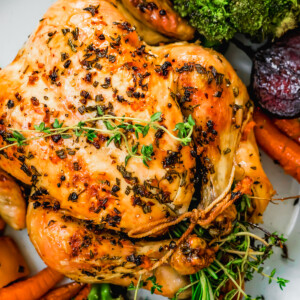
Roast Chicken with Fall Vegetables
Ingredients
For The Chicken
- 3 pound whole chicken
- 1/2 lemon,, quartered
- 2 sprigs thyme
- 3 cloves garlic
- 2 sprigs rosemary
- 3 tablespoons olive oil
- 1/2 tablespoon chopped fresh thyme
- 1/2 tablespoon chopped fresh rosemary
- 1 clove garlic,, minced
- 1/2 teaspoon salt
- 1/4 teaspoon cracked black pepper
For The Vegetables
- 3 baby beet roots,, halved
- 1/2 pound butternut squash,, peeled and cubed
- 1/2 pound baby carrots
- 1/2 pound sweet potato,, peeled and cubed
- 1/2 pound broccoli florets
- 1 onion,, quartered
- 2 tablespoons olive oil
- Juice of 1/2 a lemon
- 1/2 teaspoon salt
- 1/2 teaspoon cracked black pepper
- 3 sprigs rosemary
Instructions
- Preheat oven to 450˚F.
- Using paper towels, pat dry the chicken.
- Place the lemon quarters, thyme sprigs, rosemary sprigs, and garlic cloves in the chicken cavity.
- Tie the legs together with kitchen twine and tuck the wings under the chicken.
- In a small bowl, combine the olive oil, thyme, rosemary, minced garlic, salt, and pepper.
- Rub the oil mixture all over the chicken skin to coat.
- Place the prepared chicken in large roasting pan.
- In a large mixing bowl, place all the prepared vegetables except the broccoli florets.
- Add the olive oil, lemon juice, salt, and pepper, and mix until well combined.
- Arrange the vegetables in the roasting pan around the prepared chicken.
- Top with the sprigs of rosemary and roast for 12 minutes.
- Reduce temperature to 350˚F and continue to roast for 45 minutes.
- Add the broccoli florets and roast for a further 20 minutes, or until chicken is golden and cooked through and vegetables are tender. Chicken is cooked through when internal temperature registers at 165˚F.
- Remove from oven and let rest for 10 minutes before cutting.
Nutrition
Nutritional info is an estimate and provided as courtesy. Values may vary according to the ingredients and tools used. Please use your preferred nutritional calculator for more detailed info.
